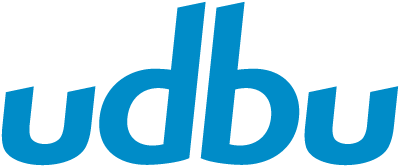Better Material Surface, Better Laser Cutting: Enhancing Precision and Quality
Better Material Surface, Better Laser Cutting: Enhancing Precision and Quality
When it comes to laser cutting, the quality of the material's surface plays a critical role in the final outcome. From intricate designs to precise cuts, a smooth, clean material surface ensures better laser performance, higher cut quality, and reduced maintenance costs. But how does surface condition affect the cutting process, and what can manufacturers do to optimize material surfaces for the best results?
Let’s explore how the quality of material surfaces impacts laser cutting, and why it’s essential to invest in proper surface preparation for improved performance.
Why Surface Quality Matters in Laser Cutting
Laser cutting is a precise process that relies on focused beams of light to cut through materials like metal, plastic, wood, and composites. The beam’s intensity, speed, and focus depend on the material’s surface quality. If the material is rough, dirty, or inconsistent, the laser may scatter, leading to:
-
Inconsistent Cuts: Rough or uneven surfaces disrupt the beam’s focus, resulting in uneven or jagged cuts. This can affect both the speed and accuracy of the process.
-
Increased Wear on Equipment: Rougher surfaces can cause the laser cutter to work harder, potentially leading to overheating and premature wear on components such as lenses and mirrors.
-
Subpar Finishing: After cutting, surfaces with imperfections may require additional processes like grinding or polishing to achieve the desired finish. This adds extra time and costs.
-
Reduced Efficiency: A poor surface quality can slow down the cutting process, as the laser needs to work harder to penetrate the material. It may also lead to increased energy consumption.
-
Increased Risk of Defects: Surface imperfections like oxidation, rust, or grease buildup can cause contamination during cutting, which may introduce unwanted material residues or affect cut accuracy.
Types of Surface Issues Affecting Laser Cutting
1. Surface Contamination
Dust, oil, grease, and even fingerprints can disrupt the laser cutting process. Contaminants can lead to uneven absorption of the laser energy, resulting in poor cut quality or material damage. Contamination is especially critical in high-precision industries like aerospace or medical device manufacturing.
2. Surface Roughness
A rough or textured surface can scatter the laser beam, which leads to poor focus and uneven cuts. Metals with mill-scale or rough, unfinished edges also fall into this category. Materials like stainless steel, for example, may require additional surface preparation before laser cutting to remove any scale that can interfere with the beam's focus.
3. Oxidation and Rust
Oxidized or rusty surfaces, especially in metals like steel and aluminum, present significant challenges for laser cutting. Oxide layers can absorb laser energy differently, which leads to inconsistent cutting depth and quality. Additionally, rust can promote further oxidation during the cutting process, affecting both the material and the cutter.
4. Inconsistent Thickness
If the material surface has uneven thickness, it can cause irregular cutting speeds and lead to inconsistent results. This is especially problematic in materials like plastics or composite sheets where the thickness varies across the surface.
How to Improve Material Surface for Laser Cutting
To optimize laser cutting performance, ensuring a clean, smooth material surface is key. Here are some tips on preparing materials to improve laser cutting outcomes:
1. Proper Material Handling and Storage
- Store materials in a dry, clean environment to prevent rust, oxidation, and contamination. Use protective covers or coatings for metals prone to corrosion.
- Handle materials carefully to avoid leaving fingerprints, grease, or dust that can affect the cutting process.
2. Surface Cleaning
- Regularly clean the material surfaces before laser cutting to remove any dirt, oils, or contaminants. This can be done using solvents, brushes, or industrial cleaning solutions.
- Use ultrasonic cleaners for materials that require a delicate touch, such as thin or intricate metal sheets.
3. Remove Mill Scale and Oxidation
- For metals like steel, it’s often necessary to remove mill scale (the oxide layer) before laser cutting. This can be done through mechanical methods, like grinding or abrasive blasting, or chemical treatments such as acid pickling.
4. Surface Conditioning
- Consider using abrasive or polishing processes to smooth out rough surfaces. For stainless steel or aluminum, techniques like abrasive blasting or buffing can achieve a smooth finish that allows the laser beam to focus more precisely.
5. Consistent Thickness
- Ensure the material is cut or rolled to a uniform thickness before laser processing. This minimizes any irregularities that could affect the cutting performance and quality.
6. Use Coated Materials
- For metals, consider using pre-coated options that are designed to reduce oxidation during the cutting process. Many manufacturers offer laser-friendly coatings that can help improve cut quality and reduce material defects.
Conclusion
A better material surface truly does lead to better laser cutting results. The smoother and cleaner the material, the more efficiently the laser will work, delivering precise, clean cuts and reducing the need for additional finishing. Additionally, maintaining high surface quality minimizes equipment wear and lowers operational costs over time.
Whether you are cutting metals, plastics, or other materials, taking the time to prepare the surface before laser cutting can drastically improve the outcome of your projects. By implementing proper handling, cleaning, and surface preparation techniques, you can ensure that your laser cutting process is as efficient and precise as possible.
So, next time you’re preparing materials for a laser cutting project, remember: a little extra attention to surface quality can make a big difference in your results.
